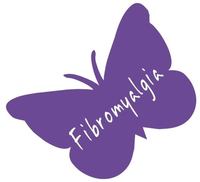Pain Care Advocacy in an Era of Opioid Abuse Part 2
By Jennifer Van Pelt, MA
Social Work Today Vol. 12 No. 5 P. 16
Prescribing opioids responsibly is a tricky balance since every patient and his or her pain is unique. In addition to being evaluated for symptoms and the potential for adverse side effects, pain sufferers must be evaluated for substance abuse potential, Barrett says.
As a result of media attention on increasing rates of prescription pain medication abuse, those with chronic pain who had previously found improved functioning, psychological health, and quality of life with appropriate opioid use began to face increased difficulties receiving effective treatment. For the last few years, social workers involved in pain management have been seeing their patients and clients endure the effects of this antiopioid sentiment and are experiencing challenges in advocating for those living with chronic pain. Health insurers may have stopped covering opioids, providers stopped writing prescriptions, and/or pharmacies did not stock the medications. “The glimmer of hope that they had experienced for managing their pain and participating more fully in society was extinguished,” Colón says.
Efforts intended to address opioid abuse have adversely affected quality of life for those with chronic pain. The growing fear and stigma linked to opioid use have led to unintended consequences for patients with chronic pain who could appropriately use opioids with substantial overall benefit. “Policy, healthcare payer rulings, and professional behaviors in response to antiopioid media coverage continue to erode access to effective pain management for those who suffer from chronic pain,” Colón says.
Medication Misconceptions
So much misunderstanding about opioid pain medications has been generated by the negative media focus, healthcare providers, patients, family caregivers, and community members, according to Shirley Otis-Green, MSW, ACSW, LCSW, OSW-C, senior research specialist in nursing research and education at City of Hope, a Comprehensive Cancer Center in Duarte, CA, and coeditor of the Oxford Textbook of Palliative Social Work. She has been involved in national research and education programs on state-of-the-art pain management as a component of palliative cancer care.
“Patients receive mixed messages about prescribed opioids … that they are needed for effective pain relief, yet they should ‘just say no’ to drugs,” she explains. Family caregivers may have misconceptions and fears about loved ones using strong medications and express concerns about dependence or addiction. The resulting layers of guilt and confusion can circumvent even the best pain management strategies, she says.
Among healthcare practitioners, there is enormous fluctuation in clinical perspectives on opioid prescription, Otis-Green notes. “Some are not comfortable prescribing an opioid for joint pain but will prescribe one for cancer pain. Others will not even prescribe opioids at all until they perceive the patient is in the last days of life,” she explains.
At one point, Otis-Green was involved in state and national movements to advocate for more informed palliative pain care to better meet the needs of cancer patients. “It was a huge effort just to get pain management guidelines for this patient group,” she says.
Recently published studies report that misconceptions remain, and palliative pain management is often suboptimal despite new guidelines for end-of-life pain care (Gardiner, Gott, Ingleton, Hughes, Winslow, & Bennett, 2012; Shaheen et al., 2010). For patients with chronic noncancer pain, opioid prescription remains highly controversial, and even in the wake of prescription guidelines and educational efforts, primary care physicians continue to practice under misconceptions about appropriate opioid use vs. addiction, leading to patient undertreatment (Wolfert, Gilson, Dahl, & Cleary, 2010; Hooten & Bruce, 2011). Surveys of physician knowledge about opioid prescriptions indicate that overall pain management expertise is lacking; knowledge and comfort with opioid pain management is low; medical training in appropriate opioid use is inadequate; pain management referral options are lacking; pain management reimbursement is limited; and concerns regarding patient addiction are common (Keller, Ashrafioun, Neumann, Van Klein, Fox, & Blondell, 2012; Barry et al., 2010).
Negative language associated with prescription opioids further contributes to ongoing misconceptions. “Terminology for these drugs should be finessed to minimize repercussions in perception,” Otis-Green says. “Use ‘opioids’ or ‘pain medication,’ not ‘painkiller’ or ‘narcotic.’”
To read more please click here: http://www.chronicintractablepainandyou.net/apps/forums/topics/show/13137800-pain-care-advocacy-in-an-era-of-opioid-abuse-part-2








